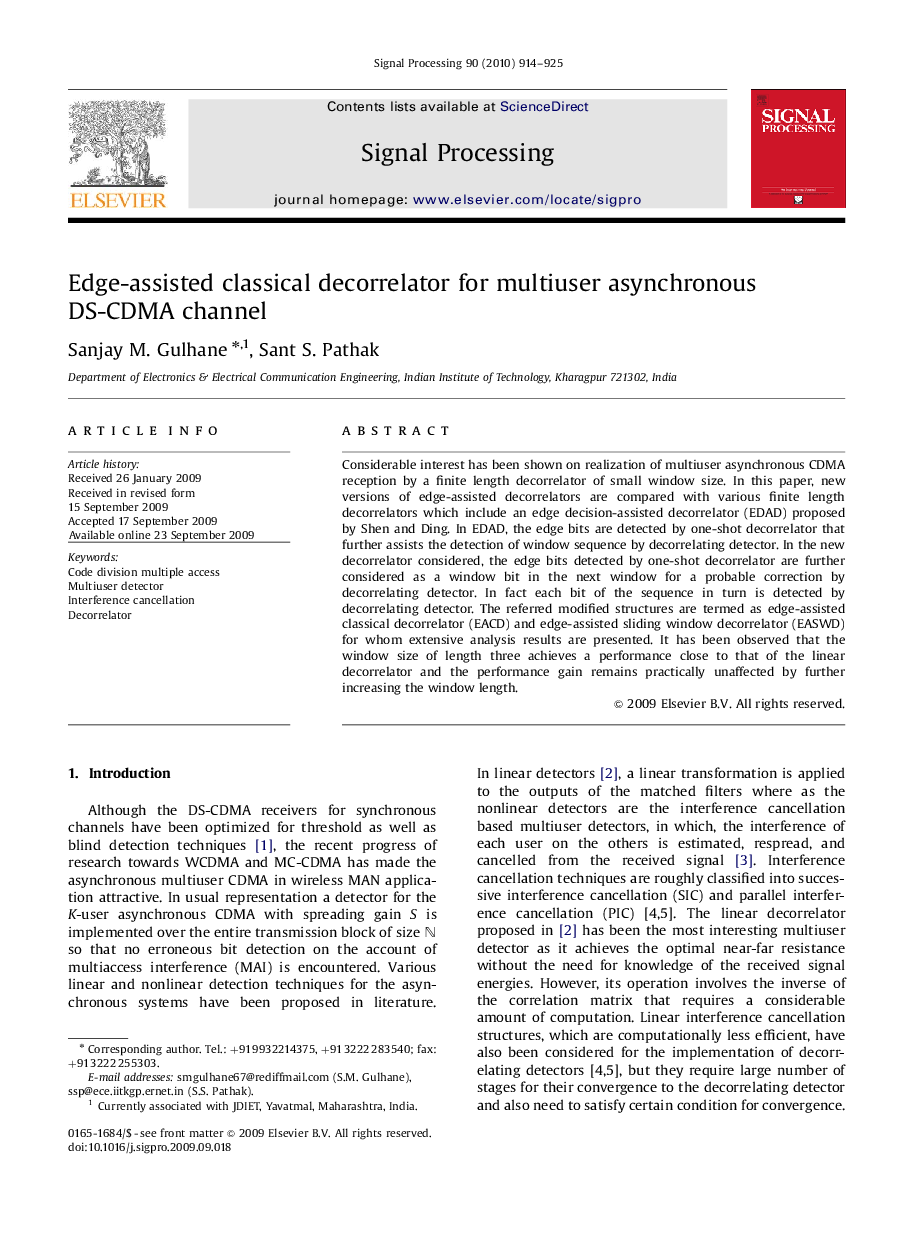| Article ID | Journal | Published Year | Pages | File Type |
|---|---|---|---|---|
| 563823 | Signal Processing | 2010 | 12 Pages |
Considerable interest has been shown on realization of multiuser asynchronous CDMA reception by a finite length decorrelator of small window size. In this paper, new versions of edge-assisted decorrelators are compared with various finite length decorrelators which include an edge decision-assisted decorrelator (EDAD) proposed by Shen and Ding. In EDAD, the edge bits are detected by one-shot decorrelator that further assists the detection of window sequence by decorrelating detector. In the new decorrelator considered, the edge bits detected by one-shot decorrelator are further considered as a window bit in the next window for a probable correction by decorrelating detector. In fact each bit of the sequence in turn is detected by decorrelating detector. The referred modified structures are termed as edge-assisted classical decorrelator (EACD) and edge-assisted sliding window decorrelator (EASWD) for whom extensive analysis results are presented. It has been observed that the window size of length three achieves a performance close to that of the linear decorrelator and the performance gain remains practically unaffected by further increasing the window length.
